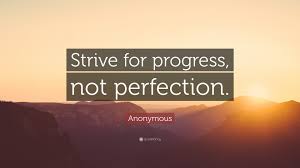By Flow Coach Mackennon Klink, BS, CSCS, PN1
Whether it is a kitchen remodel, job promotion, or increasing “followers” on Instagram, there is no better feeling than to see how far you have come after starting something. This holds true for your fitness goals as we know there is no bigger discouragement than lack of progress after countless hours in the gym. While there are many ways to assess overall progress, the 5 listed below are the ones that I have found most reliable when addressing more aesthetic fitness goals (i.e. not only feel your best but look your best in the process). As a rule of thumb, progress should be tracked every 4 to 6 weeks.
1. Progress Pictures
While quality of life should be your primary goal, we do understand that people also want to “look” as great as they feel. Pictures serve as a great motivator as they will always be there to provide inspiration and a sense of accomplishment in how far you have come.
Progress photos should be taken at the beginning of your fitness journey, then preferably every 4-6 weeks in regular intervals. Here are a couple of tips when taking your photo:
· Take photo at the same time of day
· Wear the same clothes
· Use the same lighting and background
· Save photo as full size and with high resolution
· Take pictures from the front, profile , and back
· Pose as the REAL YOU (No flexing, tightening, or sucking in)
2. Body Circumference Measurements
Placement of fat is a significant factor in the risk of disease. Those with a high percentage of fat in the abdominal region are more at risk than those with the fat located elsewhere. A common method to assess this potential risk is to obtain a waist to hip measurement and its corresponding ratio. For health reasons, it is recommended that waist to hip ratios be <0.90 and <0.80 for men and women, respectively.
· Record each measurement to the 1/8 inch
· Here is a great video to show you how to conduct a waist to hip assessment
3. Body Fat Percentage
Body fat assessments are a common form of measurement to track overall body composition (fat mass vs. lean muscle mass) and is my preferred indicator of overall progress. Unfortunately, body fat measurements are more difficult to “self-administer” and in-home devices are usually inaccurate. My advice is to invest the $35-50 it cost to do Hydrostatic Weighing, Dexa-Scan or Fit3D Scan (currently offered at Flow Fitness) as these represent the “Gold Standards” in reliable body composition measurements.
Check out the table below to see which category you fall into:
| Body Composition Category | Women | Men |
| Essential Fat | 10-12% | 2-4% |
| Fitness | 14-20% | 6-13% |
| Acceptable | 25-31% | 18-25% |
| Unhealthy | 32% or higher | 26% or higher |
4. Writing Stuff Down
If you are serious about getting results, you will need to start tracking your workouts. What does tracking your workout and progress looks like? It begins with having a workout plan in place and writing down what you did. For example:
· If you did 5 sets of 5 reps of back squats at 225 last week, then you’ll need to do 5 sets of 5 reps of back squats at 230+lbs the following week to get stronger.
· If you did 3 sets of 5 pull ups last week for a total of 15 pull ups, then you’ll need to do 16+ pull ups the following week to get stronger.
A journal (and a pen) only cost you a few bucks and can make a huge difference in your training and results.
5. The Scale
For the record, I am not a big fan of using bodyweight as a metric for tracking progress. With the primary reason being that our weight fluctuates daily from 2-5 pounds! In addition, too many people allow the number on the scale to radically impact their mood and how they feel about themselves. However, if you choose to use the scale to measure progress, step on the scale the first thing in the morning after going to the bathroom and before drinking or eating anything.
Along with pictures and measurements, the scale is simply another tool in your toolbox to assess progress, so you can adjust your current plan when needed. Remember transformation does not happen overnight and the best way to ensure progress is to stay consistent in your training plan and by enjoying the sense of accomplishment that follows.

